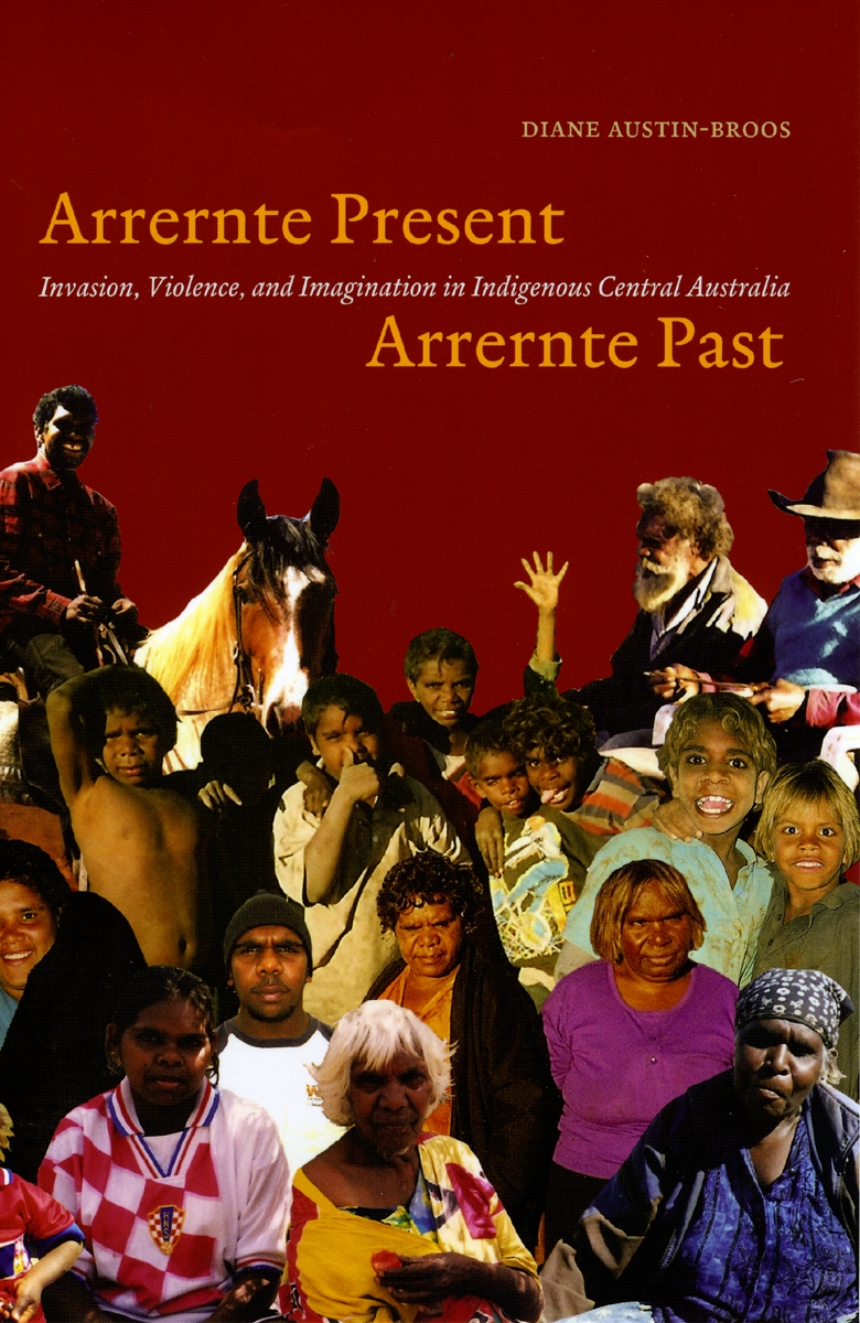Arrernte Present, Arrernte Past
Invasion, Violence, and Imagination in Indigenous Central Australia
9780226032641
9780226032634
9780226032658
Arrernte Present, Arrernte Past
Invasion, Violence, and Imagination in Indigenous Central Australia
The Arrernte people of Central Australia first encountered Europeans in the 1860s as groups of explorers, pastoralists, missionaries, and laborers invaded their land. During that time the Arrernte were the subject of intense curiosity, and the earliest accounts of their lives, beliefs, and traditions were a seminal influence on European notions of the primitive. The first study to address the Arrernte’s contemporary situation, Arrernte Present, Arrernte Past also documents the immense sociocultural changes they have experienced over the past hundred years.
Employing ethnographic and archival research, Diane Austin-Broos traces the history of the Arrernte as they have transitioned from a society of hunter-gatherers to members of the Hermannsburg Mission community to their present, marginalized position in the modern Australian economy. While she concludes that these wrenching structural shifts led to the violence that now marks Arrernte communities, she also brings to light the powerful acts of imagination that have sustained a continuing sense of Arrernte identity.
Employing ethnographic and archival research, Diane Austin-Broos traces the history of the Arrernte as they have transitioned from a society of hunter-gatherers to members of the Hermannsburg Mission community to their present, marginalized position in the modern Australian economy. While she concludes that these wrenching structural shifts led to the violence that now marks Arrernte communities, she also brings to light the powerful acts of imagination that have sustained a continuing sense of Arrernte identity.
336 pages | 18 halftones, 8 maps, 3 line drawings | 6 x 9 | © 2008
Anthropology: Cultural and Social Anthropology
Asian Studies: Southeast Asia and Australia
History: General History
Reviews
Table of Contents
Maps and Illustrations
Acknowledgments
Note on Orthography
Abbreviations
Introduction
Part One: Remembering the Mission
1. Encounter at Ntaria
2. Kaporilya, a Big Place
3. The Meaning of Pepe
Part Two: Life as a Standing Fight
4. Home and Away: The Dislocation of Identity
5. Living with Kin
6. Honey Ants and Relatedness
Part Three: Outstations and Being Remote
7. Factionalism (or, the Secret Life of an Outstation Movement)
8. When Imaginaries Collide
9. A Very Remote Emergency
Conclusion
Appendix A: Kaporilya Song
Appendix B: Glossary of Western Arrernte Terms
Notes
References
Index
Acknowledgments
Note on Orthography
Abbreviations
Introduction
Part One: Remembering the Mission
1. Encounter at Ntaria
2. Kaporilya, a Big Place
3. The Meaning of Pepe
Part Two: Life as a Standing Fight
4. Home and Away: The Dislocation of Identity
5. Living with Kin
6. Honey Ants and Relatedness
Part Three: Outstations and Being Remote
7. Factionalism (or, the Secret Life of an Outstation Movement)
8. When Imaginaries Collide
9. A Very Remote Emergency
Conclusion
Appendix A: Kaporilya Song
Appendix B: Glossary of Western Arrernte Terms
Notes
References
Index
